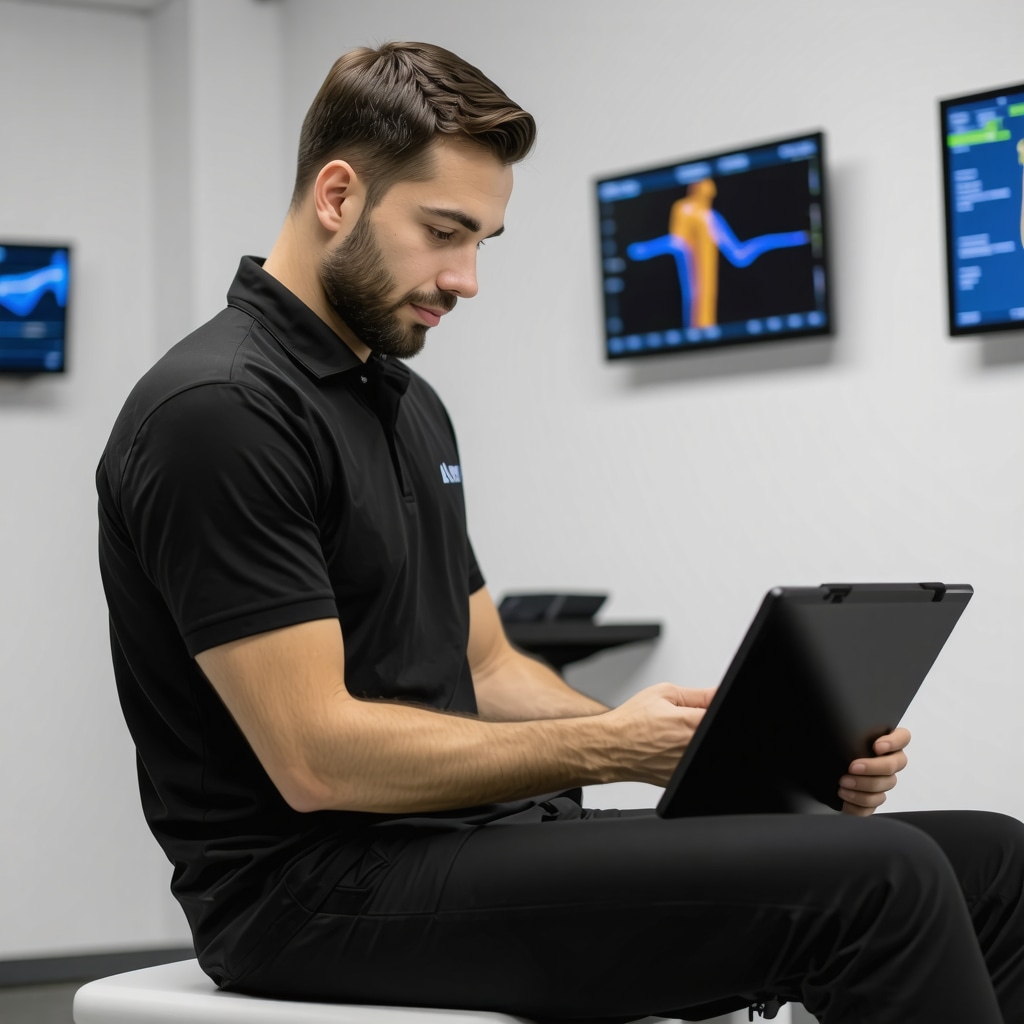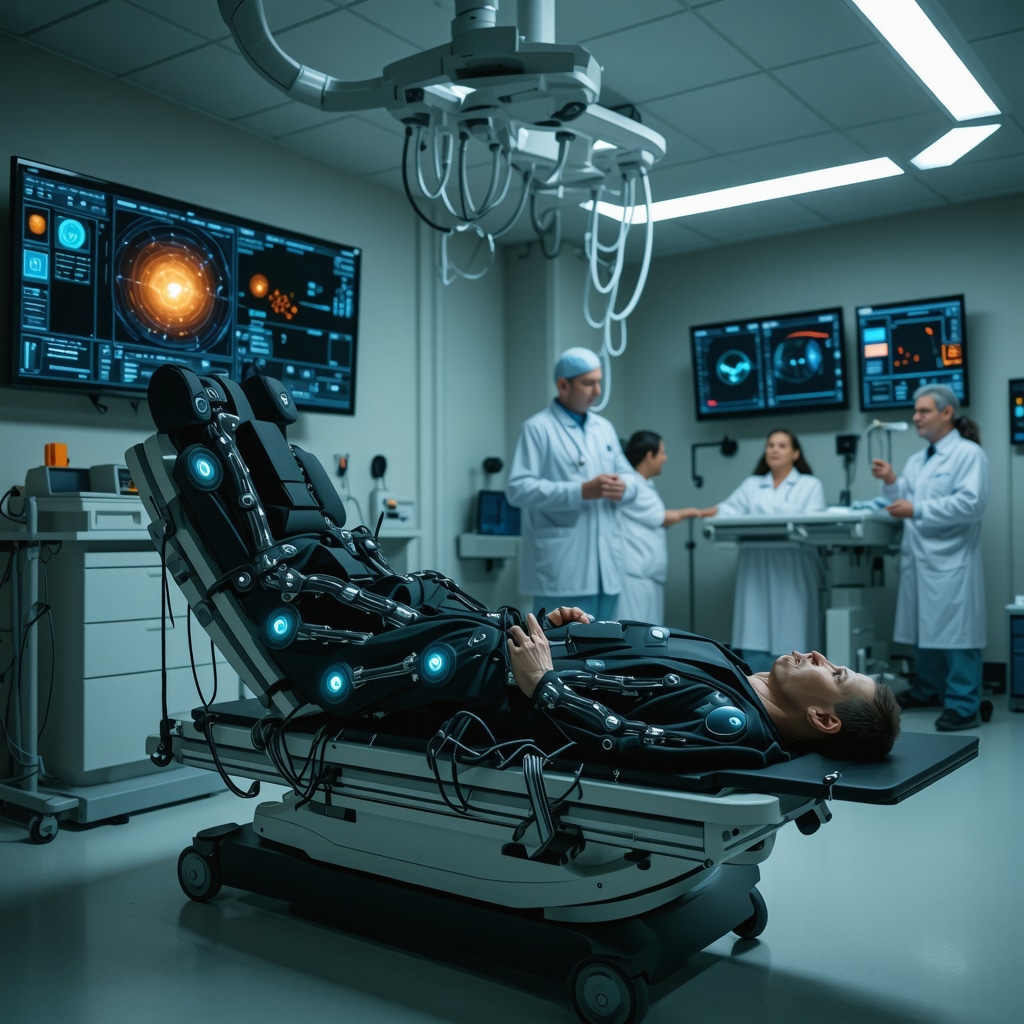Advanced Insights into Spine Surgery Recovery: A New Jersey Surgeon’s Perspective
Successful recovery from spine surgery requires more than just standard postoperative care; it demands a nuanced understanding of individual patient factors, surgical techniques, and rehabilitative protocols. New Jersey spine surgeons emphasize that recovery is a multifactorial process shaped by preoperative preparation, intraoperative precision, and postoperative vigilance. This article delves into expert strategic recommendations to optimize healing trajectories and functional outcomes after spine surgery.
Strategic Preoperative Conditioning and Patient Education
Preoperative optimization is foundational for minimizing complications and accelerating recovery. Surgeons advise comprehensive patient education on the anatomy involved, surgical goals, and expected rehabilitation milestones. Engaging in tailored physical conditioning—focusing on core stability and cardiovascular health—has been shown to enhance postoperative resilience. Moreover, addressing modifiable risk factors such as smoking cessation and glycemic control greatly improves surgical success rates and recovery speed.
Innovations in Surgical Techniques Impacting Recovery Dynamics
The advent of minimally invasive spine surgery (MISS) and robotic-assisted procedures has revolutionized recovery paradigms. These approaches reduce tissue trauma, blood loss, and operative time, facilitating earlier mobilization and diminished postoperative pain. New Jersey surgeons increasingly incorporate these cutting-edge technologies to enhance precision and patient outcomes. For detailed insights into robotic-assisted spine surgery and minimally invasive techniques, consult specialized resources.
What Are the Most Critical Postoperative Care Practices to Ensure Optimal Spine Surgery Recovery?
Postoperative care is a complex balance of pain management, wound care, and progressive rehabilitation. Experts highlight the importance of adhering to individualized physical therapy regimens designed to restore spinal function without overloading healing tissues. Pain control strategies should minimize opioid reliance, employing multimodal analgesia and non-pharmacologic interventions. Vigilant monitoring for complications such as infection or hardware failure is essential, with prompt intervention to mitigate adverse outcomes. Utilizing recommended recovery aids can significantly enhance patient comfort and safety during this critical phase.
Integrating Psychological and Nutritional Factors into Recovery Protocols
Recovery extends beyond physical healing; psychological resilience and nutritional status are pivotal. Surgeons in New Jersey advocate for incorporating mental health support to address anxiety and depression often associated with chronic back conditions and surgery. Nutritionally, adequate protein intake and micronutrients such as vitamin D and calcium are vital for bone healing and tissue repair. Multidisciplinary collaboration among surgeons, nutritionists, and mental health professionals fosters a holistic recovery environment.
Evidence-Based Approaches to Preventing Complications and Enhancing Long-Term Outcomes
Preventing common complications like failed back surgery syndrome requires a rigorous, evidence-based approach. Surgeons emphasize patient selection criteria and precise surgical indication to avoid unnecessary interventions. Postoperative protocols incorporate early mobilization balanced with protective measures against excessive strain. Emerging research published in journals such as PubMed supports tailored rehabilitation programs that adapt dynamically to patient progress, fostering durable functional restoration.
Explore more expert-level insights on spine care and surgical advancements by visiting this detailed guide and contribute your professional experiences for ongoing knowledge exchange.
Leveraging Technology for Enhanced Postoperative Monitoring and Rehabilitation
In the evolving landscape of spine surgery recovery, the integration of digital health technologies plays a transformative role. New Jersey spine surgeons increasingly utilize telemedicine platforms, wearable sensors, and mobile applications to monitor patients’ progress remotely. These tools enable real-time tracking of mobility metrics, pain levels, and adherence to rehabilitation protocols, fostering timely adjustments to care plans. Such innovations not only enhance patient engagement but also reduce the need for frequent in-person visits, particularly beneficial for those with mobility challenges or residing in remote areas.
How Can Personalized Rehabilitation Protocols Maximize Functional Recovery After Spine Surgery?
Personalization of rehabilitation is paramount, as patients exhibit diverse healing capacities and lifestyle demands. Expert clinicians advocate for rehabilitation programs that dynamically evolve based on objective assessments and patient feedback. Initial phases focus on gentle mobilization and neuromuscular re-education to restore proprioception and prevent muscle atrophy. As healing progresses, protocols incorporate strength training, flexibility exercises, and ergonomic education to support long-term spinal health. Multidisciplinary collaboration among physical therapists, occupational therapists, and spine surgeons ensures comprehensive care tailored to individual recovery trajectories.
Addressing Comorbidities and Age-Related Factors in Recovery Planning
Recovery strategies must be adapted for patients with comorbid conditions such as diabetes, osteoporosis, or cardiovascular disease, which may complicate healing and increase complication risks. New Jersey surgeons emphasize preoperative optimization of these conditions and close postoperative surveillance. For elderly patients, special considerations include balance training to reduce fall risk and tailored pain management to minimize cognitive side effects from medications. An article published by the National Center for Biotechnology Information (NCBI) highlights the importance of a geriatric-specific approach to spine surgery recovery, underscoring the need for interdisciplinary support.
Innovations in Pain Management: Beyond Opioids for Spine Surgery Patients
Given the opioid epidemic and associated risks, New Jersey spine surgeons champion multimodal analgesia strategies encompassing non-opioid medications, nerve blocks, and integrative therapies such as acupuncture and mindfulness. These approaches aim to control pain effectively while minimizing adverse effects. Additionally, patient education about pain expectations and coping mechanisms is critical to reduce anxiety and improve compliance with rehabilitation efforts.
For further exploration of advanced recovery techniques and expert recommendations, visit our comprehensive resource on spine surgery recovery tips from NJ specialists. Engage with our community by sharing your experiences or asking questions in the comments to contribute to ongoing professional dialogue.

Harnessing Artificial Intelligence and Machine Learning for Predictive Recovery Models
The integration of artificial intelligence (AI) and machine learning algorithms into spine surgery recovery is rapidly becoming a game-changer. These technologies enable surgeons to predict individualized recovery trajectories by analyzing vast datasets encompassing patient demographics, surgical variables, and postoperative outcomes. AI-driven predictive models can identify patients at higher risk for complications or delayed healing, allowing for preemptive interventions tailored to their unique profiles. This precision medicine approach not only optimizes resource allocation but also enhances patient counseling and expectation management.
What Role Does AI Play in Enhancing Postoperative Spine Surgery Rehabilitation?
AI applications facilitate dynamic rehabilitation protocols by continuously assessing patient progress through wearable devices and patient-reported outcomes. For instance, machine learning algorithms can detect subtle deviations in gait or spinal alignment during recovery, prompting timely adjustments to physical therapy regimens. Furthermore, virtual coaching platforms powered by AI offer personalized exercise guidance and motivational support, improving adherence and functional restoration. Such innovations underscore the paradigm shift from reactive to proactive postoperative care, fostering improved long-term results.
Biomechanical Innovations: Customizable Orthoses and Dynamic Support Systems
Recent advances in biomechanical engineering have led to the development of customizable spinal orthoses and dynamic support systems that adapt to patients’ movements and recovery stages. Unlike traditional rigid braces, these devices provide variable support, promoting optimal spinal alignment while allowing gradual increases in mobility. Incorporating smart materials and embedded sensors, they offer real-time feedback on posture and load distribution, empowering patients and clinicians alike to monitor healing progress accurately.
Clinical trials have demonstrated that such adaptive orthoses reduce muscle atrophy and improve patient comfort, thereby enhancing compliance and overall rehabilitation success. Collaborative efforts between biomedical engineers and New Jersey spine surgeons continue to refine these technologies, integrating them seamlessly into postoperative care plans.
Multimodal Interdisciplinary Approaches: Bridging Surgical Care with Holistic Recovery
Emerging evidence advocates for an interdisciplinary approach that transcends traditional surgical and rehabilitative boundaries. Integrating pain specialists, psychologists, nutritionists, and physical therapists into a cohesive recovery team ensures that the multifaceted needs of spine surgery patients are comprehensively addressed. For example, cognitive-behavioral therapy can mitigate chronic pain syndromes by modifying neural pain pathways, while tailored nutritional interventions support tissue regeneration and immune competence.
This collaborative model facilitates continuous communication among providers, enabling dynamic adjustments based on patient feedback and clinical progress. Such frameworks reflect the latest guidelines from the North American Spine Society, emphasizing evidence-based, patient-centered care to maximize functional restoration and quality of life.
Exploring Regenerative Medicine: Potential Game Changers in Spine Surgery Recovery
Regenerative medicine, particularly stem cell therapy and biologics, is an exciting frontier with the potential to revolutionize postoperative spine recovery. Research is increasingly focusing on using mesenchymal stem cells to promote intervertebral disc regeneration and enhance fusion rates in spinal arthrodesis procedures. Additionally, growth factors and platelet-rich plasma (PRP) applications are being investigated to accelerate bone healing and reduce inflammation.
While still emerging, these therapies promise to reduce recovery times and improve long-term outcomes by addressing the underlying degenerative processes rather than solely managing symptoms. New Jersey surgeons collaborating with research institutions are actively engaged in clinical trials to validate safety and efficacy, heralding a future where biologically enhanced recovery protocols become standard practice.
Optimizing Sleep Quality for Enhanced Healing: An Often Overlooked Dimension
Sleep is a critical yet frequently underappreciated component of spine surgery recovery. Quality sleep facilitates tissue repair, modulates pain perception, and supports neuroplasticity necessary for functional recovery. Surgeons recommend implementing sleep hygiene education and, when appropriate, utilizing non-pharmacologic interventions such as cognitive-behavioral therapy for insomnia (CBT-I). Furthermore, positional devices may be prescribed to maintain spinal alignment during rest, reducing discomfort and promoting healing.
Integrating sleep assessments into postoperative follow-ups allows clinicians to identify and address sleep disturbances promptly, thereby optimizing the overall recovery milieu.
To explore these advanced modalities and their practical implementation in greater detail, visit our comprehensive resource on spine surgery recovery tips from NJ specialists. Engage with experienced clinicians and contribute your insights to foster an evolving dialogue on cutting-edge spine care.

Augmenting Recovery Predictions with Artificial Intelligence and Data Analytics
In the vanguard of postoperative spine care, the fusion of artificial intelligence (AI) and sophisticated data analytics is reshaping prognostic capabilities. By leveraging machine learning models trained on extensive clinical datasets, surgeons can now stratify patients by risk profiles with unprecedented accuracy. This enables bespoke perioperative plans that proactively mitigate complications such as delayed fusion or infection. Furthermore, AI-driven platforms facilitate continuous postoperative surveillance through integration with wearable biosensors, dynamically adjusting recovery algorithms in real time to patient-specific progress markers.
Adaptive Biomechanical Solutions: Revolutionizing Orthotic Support and Mobility
Biomechanical innovation has ushered in a new era of spinal orthoses that transcend traditional static designs. Dynamic support systems embedded with smart materials and microelectronics provide real-time feedback on spinal posture and load distribution, adapting seamlessly to patient activity levels. These advancements not only enhance comfort and compliance but also actively promote musculoskeletal reconditioning by encouraging controlled, progressive mobilization. Clinical investigations demonstrate significant reductions in muscle atrophy and improved alignment outcomes when these customizable devices are integrated into rehabilitative protocols.
How Do Emerging Regenerative Therapies Integrate with Conventional Surgical Recovery to Enhance Long-Term Spine Health?
Emerging regenerative modalities—such as autologous mesenchymal stem cell therapy and biologic scaffolds—offer promising adjuncts to conventional spine surgery recovery. These interventions aim to restore native tissue architecture by stimulating cellular proliferation and modulating inflammatory cascades. When combined with meticulous surgical technique and tailored rehabilitation, regenerative therapies may accelerate intervertebral disc repair, augment fusion success, and attenuate chronic pain syndromes. However, their integration necessitates rigorous patient selection and close interdisciplinary coordination to optimize efficacy and safety profiles.
Synergizing Multidisciplinary Expertise: The Quintessence of Holistic Postoperative Care
Advanced recovery frameworks increasingly prioritize the orchestration of multidisciplinary teams encompassing spine surgeons, pain management specialists, rehabilitation therapists, nutritionists, and mental health professionals. This collaborative paradigm ensures comprehensive management of the biological, psychological, and social determinants influencing recovery trajectories. For instance, integrating cognitive-behavioral therapy with pharmacologic pain control can significantly diminish opioid dependency and enhance functional restoration. Nutritional optimization, including personalized micronutrient supplementation, further bolsters tissue repair mechanisms. Adhering to the North American Spine Society Clinical Guidelines ensures that these synergistic interventions align with evidence-based best practices.
Incorporating Sleep Optimization: The Understated Pillar of Effective Healing
Recent insights underscore the critical role of sleep quality in modulating postoperative recovery. Sleep facilitates anabolic processes essential for tissue regeneration, neuroplastic adaptation, and immunomodulation. Implementing targeted sleep hygiene protocols and non-pharmacologic interventions such as cognitive-behavioral therapy for insomnia (CBT-I) can substantially improve patient outcomes. Additionally, employing positional aids to maintain spinal alignment during rest mitigates discomfort and expedites healing. Routine assessment of sleep patterns should be embedded within postoperative evaluations to identify and address disturbances promptly.
For a comprehensive exploration of these avant-garde recovery modalities and to engage with leading New Jersey spine surgery experts, visit our in-depth guide on spine surgery recovery strategies. Share your insights and join the forefront of evolving spinal care.

Expert Insights & Advanced Considerations
The Synergy of Personalized Rehabilitation and Technological Integration
Tailoring rehabilitation protocols to individual patient biomechanics and recovery progress, augmented by AI-driven data analytics, represents a paradigm shift. This synergy enables dynamic, responsive adjustments that optimize functional restoration and minimize complications, as emphasized by New Jersey specialists.
Multidisciplinary Collaboration as a Cornerstone of Holistic Recovery
Integrating surgical expertise with pain management, psychological support, and nutritional optimization creates a comprehensive care model. This approach addresses the multifactorial nature of spine surgery recovery, enhancing patient resilience and long-term quality of life.
Emerging Regenerative Medicine Modalities Transforming Recovery Trajectories
Stem cell therapies and biologics promise to accelerate tissue regeneration and fusion success, potentially reducing recovery duration and improving durability of outcomes. Their integration requires careful patient selection and interdisciplinary coordination to realize full benefits.
Sleep Optimization: An Underestimated Factor in Postoperative Healing
Recognizing and addressing sleep disturbances through education and therapeutic interventions can significantly influence pain modulation and tissue repair, underscoring sleep’s pivotal role within recovery protocols.
Curated Expert Resources
- North American Spine Society Clinical Guidelines: Authoritative evidence-based standards guiding integrated spine care and recovery strategies, accessible at NASS Guidelines.
- PubMed Medical Research Database: Comprehensive repository for the latest peer-reviewed studies on spine surgery innovations and recovery paradigms, available at PubMed.
- Robotic Assisted Spine Surgery Insights: Detailed exploration of robotic techniques enhancing surgical precision and recovery, found at NJ Spine Surgeons.
- Minimally Invasive Spine Surgery Benefits: In-depth analysis of MISS advantages for postoperative healing, accessible at NJ Spine Surgeons.
- Spine Surgery Recovery Tips from NJ Specialists: A comprehensive resource compiling expert recommendations to optimize healing, available at NJ Spine Surgeons.
Final Expert Perspective
The evolving landscape of spine surgery recovery is marked by an intricate interplay of personalized rehabilitation, technological advancements, and holistic multidisciplinary care. New Jersey spine surgeons underscore the importance of integrating regenerative medicine, sleep optimization, and AI-powered monitoring to elevate recovery outcomes beyond traditional paradigms. Embracing these sophisticated strategies empowers clinicians and patients alike to navigate postoperative trajectories with greater precision and confidence. For those seeking to deepen their expertise or contribute to advancing spine care, engaging with specialized resources and professional communities is essential. To explore further or consult with leading experts, consider visiting our detailed guide on spine surgery recovery strategies or contact us directly to share insights and collaborate on cutting-edge care solutions.

